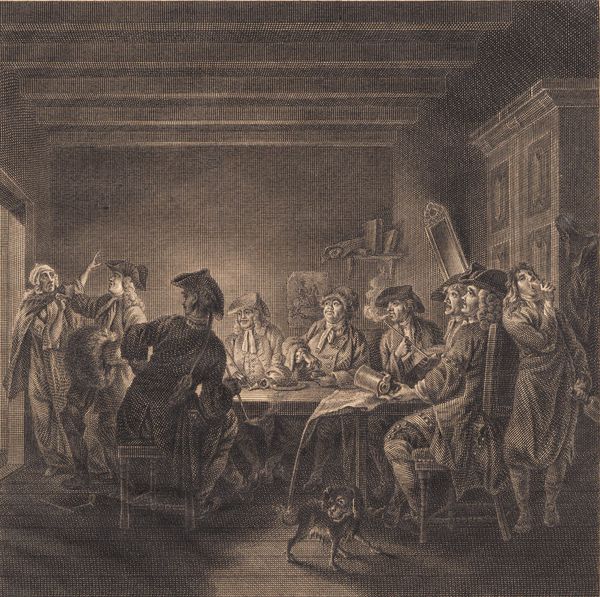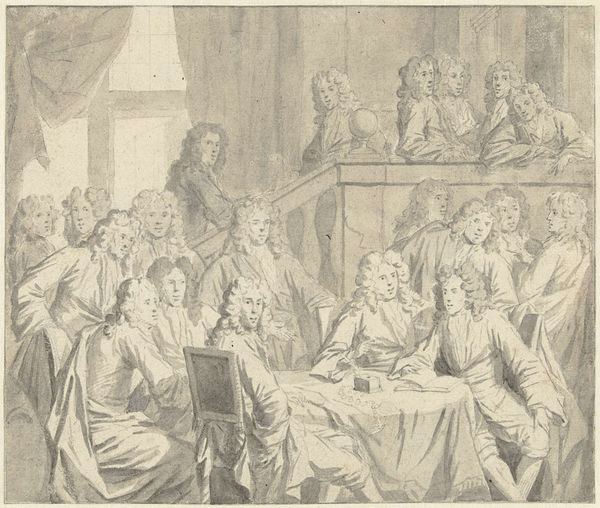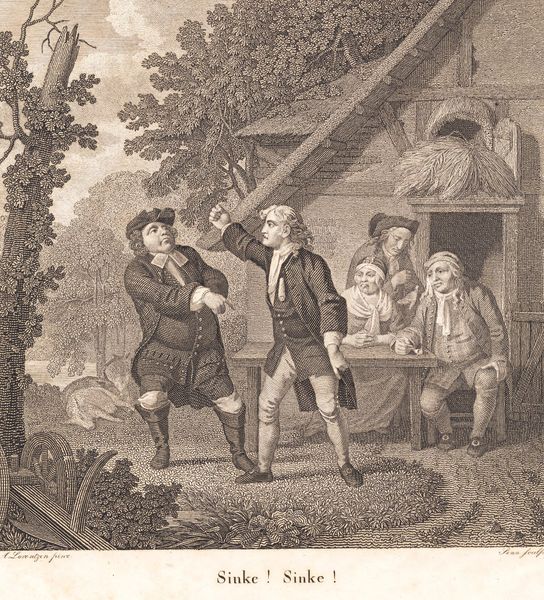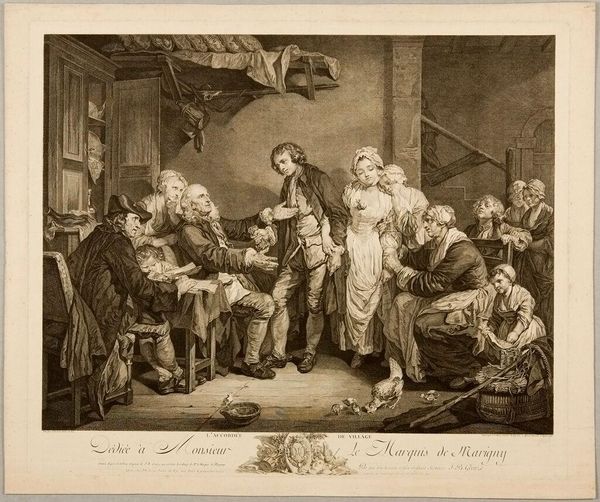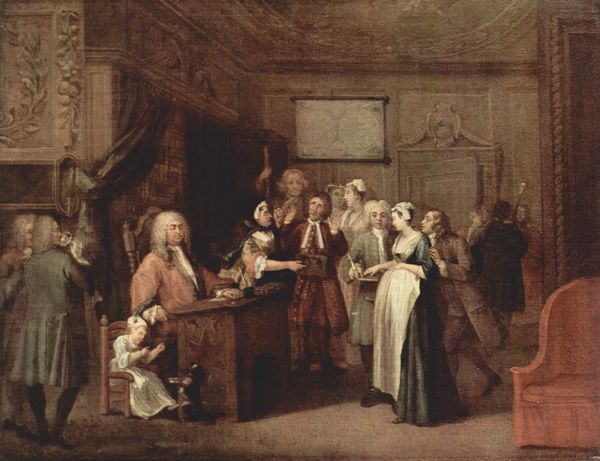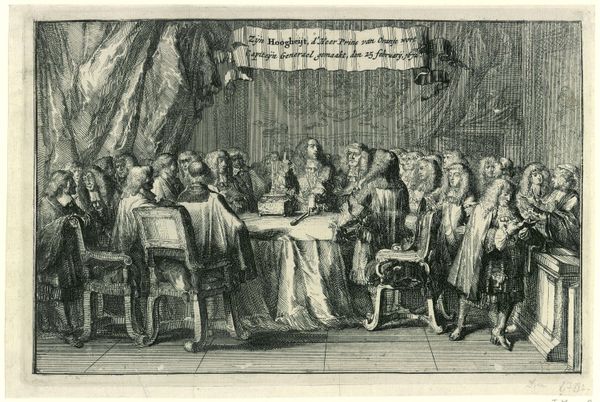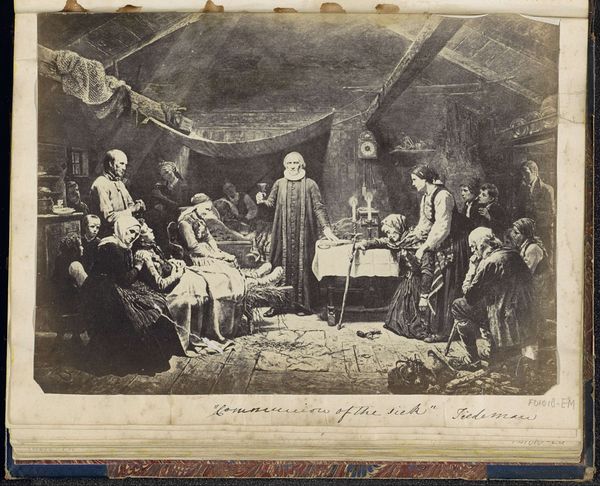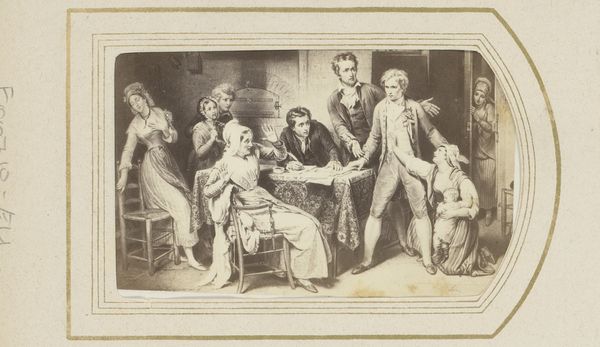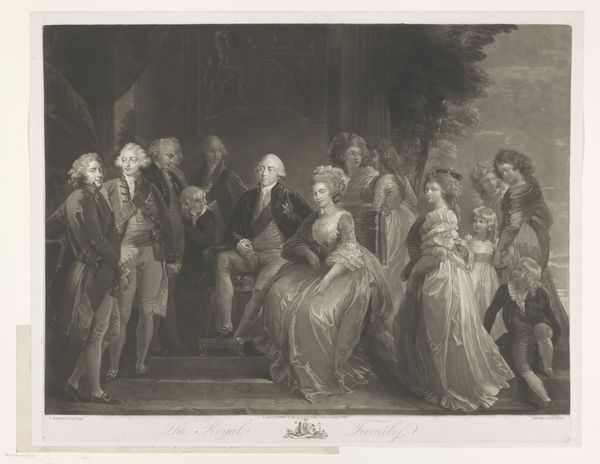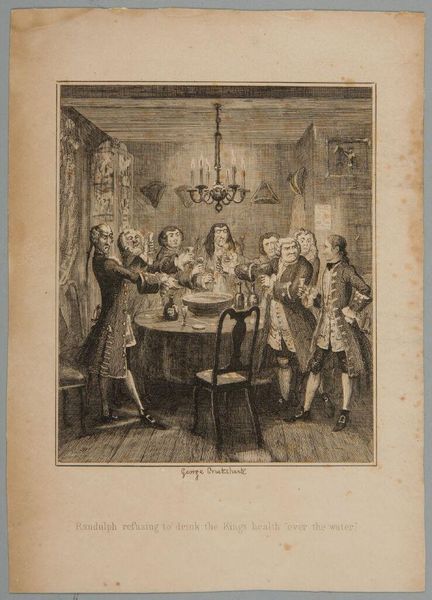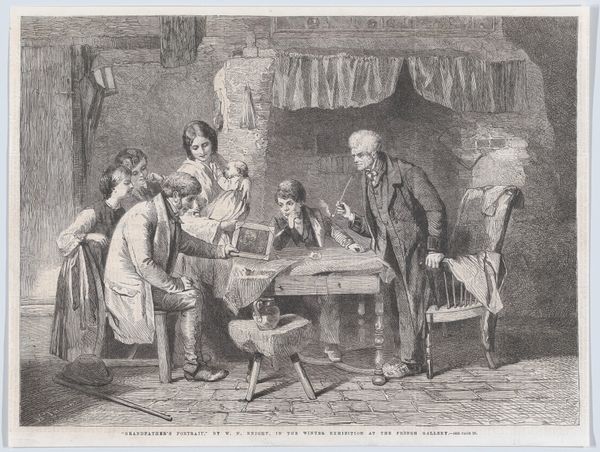
Copyright: Public domain
Editor: This is "Schiller at Weimar" by Wilhelm Von Kaulbach, painted in 1913. It’s an oil painting and it strikes me as very theatrical, almost like a stage play. What do you make of its composition? Curator: Indeed. Observe the arrangement of figures—Schiller occupies a central, elevated position, directing attention. Consider the interplay between light and shadow; it sculpts forms and creates a sense of depth. Note also the orthogonals converging towards a vanishing point, constructing a perspectival space. Editor: Yes, there is a defined recession. I notice the somewhat subdued palette too, and how that impacts the overall feeling of the piece. Why this emphasis on pictorial structure? Curator: It underscores the Romantic spirit's focus on harmony and idealized form. The formal elements, the lines and forms, are balanced, contributing to a sense of order and visual coherence. How would you describe the relationship between the figures and the setting? Editor: It seems meticulously arranged. The people aren’t really interacting with each other; they're all arranged for the viewer's benefit. It calls attention to the central figure. Curator: Precisely. Von Kaulbach orchestrates a symbolic stage, emphasizing Schiller's significance through calculated composition. We could interpret the painting as less about a real-life scene, and more about presenting Schiller's enduring influence, a tableau vivant of artistic importance. Editor: That’s interesting, looking at it that way does add another dimension to how I interpret the work. Curator: Exactly, and reflecting upon such arrangements unveils the ideological frameworks that constitute the very fabric of aesthetic appreciation.
Comments
No comments
Be the first to comment and join the conversation on the ultimate creative platform.

